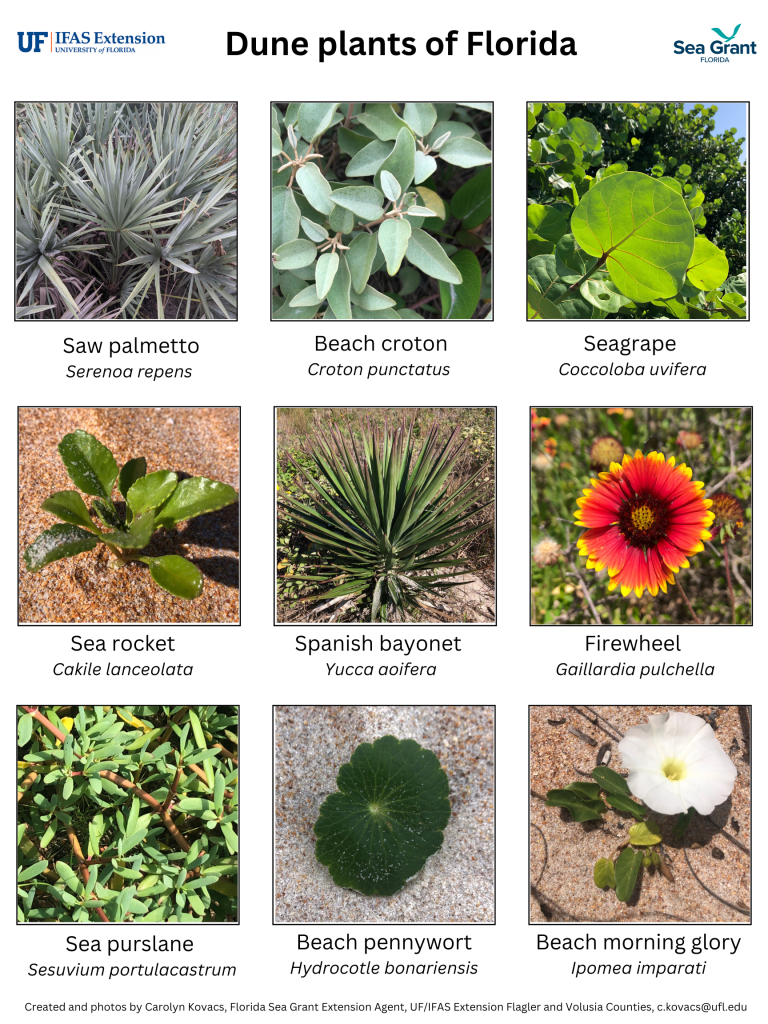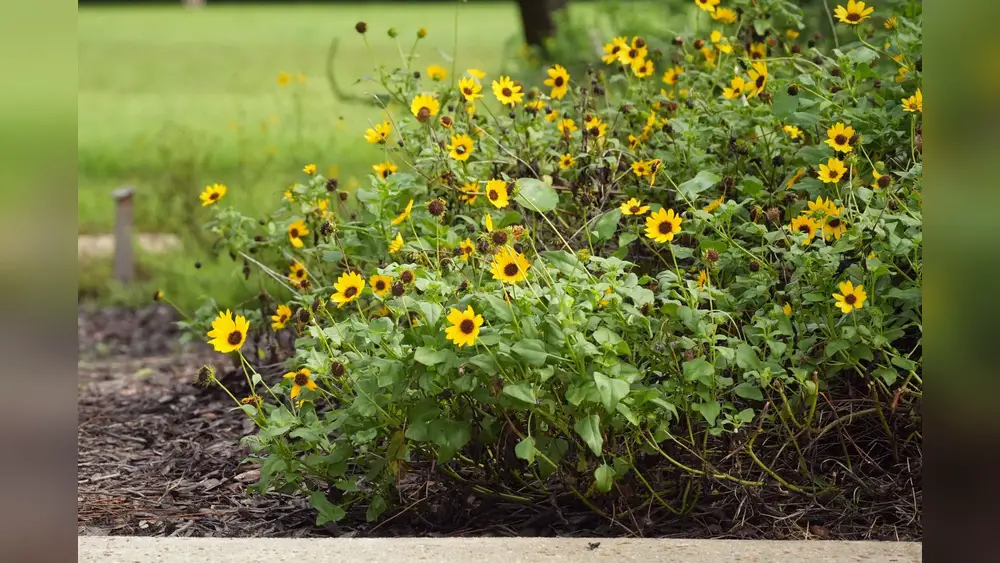Are you looking to bring vibrant life to your Florida coastal dune landscape? Choosing the right native flowers can make all the difference.
Native plants thrive in local conditions, need less water, and attract helpful wildlife like butterflies and bees. Imagine your dunes covered in colorful blooms that stand strong against salty winds and sandy soils. You’ll discover the best native flowers that not only beautify your space but also protect and preserve Florida’s unique coastal environment.
Keep reading to find out which plants will make your landscape both stunning and sustainable.

Credit: www.floridanativeplants.com
Top Native Flowers For Coastal Dunes
Coastal dunes in Florida create a tough home for plants. Salt, wind, and sandy soil challenge most flowers. Native flowers thrive here because they adapt well to these conditions. These plants help protect dunes from erosion and support local wildlife.
Choosing native flowers for coastal dunes brings beauty and strength. They need less water and care than non-native plants. These flowers attract bees, butterflies, and birds, adding life to the dunes. Here are some of the best native flowers for Florida’s coastal dunes.
Sea Oats (uniola Paniculata)
Sea oats are tall grass with golden seed heads. They hold sand in place with strong roots. This plant grows well in salty, windy places. Sea oats are vital for dune protection and offer a natural look.
Beach Sunflower (helianthus Debilis)
Beach sunflowers have bright yellow petals and green leaves. They bloom almost all year in warm weather. This flower attracts pollinators and helps stop soil erosion. It spreads quickly, covering sandy areas fast.
Coastal Rosemary (westringia Fruticosa)
Coastal rosemary is a small shrub with white or pale purple flowers. It tolerates salty air and sandy soil well. This plant adds color and texture to dunes. Birds and insects find shelter in its branches.
Seaside Goldenrod (solidago Sempervirens)
Seaside goldenrod blooms with bright yellow flowers in late summer. It grows tall and stands against strong winds. This flower attracts butterflies and bees to the coastal dunes. It also helps stabilize the sandy soil.
Beach Morning Glory (ipomoea Imperati)
Beach morning glory is a low-growing vine with white or pink flowers. It spreads across sand and holds the soil tight. This flower blooms in the early morning sunlight. It adds charm and helps prevent dune erosion.
Benefits Of Native Plants In Dune Ecosystems
Native plants play a vital role in coastal dune ecosystems. They help protect the land and support local wildlife. These plants are well adapted to the sandy soil and salty air of Florida’s coast. They grow strong roots that hold sand in place. This prevents erosion and keeps dunes healthy.
Using native plants also saves water. They need less watering than non-native species. This makes them easier to care for and good for the environment. Native plants provide food and shelter for birds, insects, and other animals. They keep the dune ecosystem balanced and thriving.
Soil Stabilization
Native plants have deep roots that bind sand tightly. This stops wind and water from washing the dunes away. Their roots create a natural barrier against erosion. They help dunes keep their shape and size over time.
Wildlife Support
These plants offer homes to many animals. Birds use them for nesting. Insects find food and shelter among the leaves. Native flowers attract pollinators like bees and butterflies. This helps keep the coastal ecosystem alive and diverse.
Water Conservation
Native plants need less water than exotic plants. They thrive in dry, sandy soils. This reduces the need for extra watering. It saves water and lowers maintenance costs. Healthy native plants also improve soil moisture retention naturally.
Resistance To Pests And Diseases
Native species resist local pests and diseases well. They grow strong without many chemical treatments. This reduces the need for pesticides and fertilizers. It keeps the environment cleaner and safer for wildlife and people.
Salt-tolerant Blossoms For Harsh Conditions
Salt-tolerant flowers are perfect for Florida’s coastal dunes. These plants survive strong winds, salty air, and sandy soil. They add color and life to tough environments. Their ability to thrive in harsh conditions makes them ideal for dune landscapes.
Choosing the right native flowers helps protect the coastline. These plants prevent erosion and support local wildlife. They need little water and care once established. Salt-tolerant blossoms bring beauty and strength to coastal areas.
Sea Oxeye Daisy (borrichia Frutescens)
The Sea Oxeye Daisy thrives in salty, sandy soil. It has bright yellow flowers that bloom almost year-round. This plant grows low and spreads wide, holding soil in place. It attracts butterflies and bees, supporting the ecosystem.
Beach Sunflower (helianthus Debilis)
Beach Sunflower is a fast-growing ground cover with yellow blooms. It tolerates salt spray and dry conditions well. This flower brightens dunes and helps stop soil erosion. It also provides food for birds and insects.
Coastal Rosemary (westringia Fruticosa)
Coastal Rosemary has small white or pale purple flowers. It grows tall and dense, offering shelter for small animals. This shrub resists salty winds and sandy soil. Its strong roots hold dunes firmly in place.
Sea Lavender (limonium Carolinianum)
Sea Lavender produces delicate purple flowers that attract pollinators. It thrives in salty marshes and sandy beaches. This plant adds soft color and texture to coastal landscapes. It is drought-tolerant and needs little care.
Colorful Choices To Brighten Sandy Soils
Bright colors bring life to sandy coastal dunes in Florida. Native flowers adapt well to salty winds and poor soil. They offer beauty and support local wildlife. These plants thrive in tough conditions and add vibrant hues to the landscape.
Choosing native flowers helps protect the natural environment. They need less water and care. These colorful plants attract butterflies and bees. They create a lively and healthy coastal ecosystem.
Beach Sunflower (helianthus Debilis)
Beach Sunflower shows bright yellow petals with dark centers. It grows low and spreads quickly. This flower blooms most of the year. It tolerates salty air and sandy soil well. Perfect for covering large sandy areas with color.
Seaside Goldenrod (solidago Sempervirens)
Seaside Goldenrod has tall stems with small yellow flowers. It blooms in late summer and fall. This plant attracts pollinators like bees. It helps stabilize dunes with deep roots. Adds golden warmth to the coastal landscape.
Coastal Rosemary (westringia Fruticosa)
Coastal Rosemary features small white or pale purple flowers. It grows as a shrub with grey-green leaves. This plant thrives in sandy, salty conditions. It provides color and texture all year. Also offers shelter for small animals.
Low-maintenance Flowers For Coastal Gardens
Low-maintenance flowers suit coastal dune gardens well. These plants survive salty air, sandy soil, and strong winds. They need little water and care. Perfect for gardeners who want beauty without much work.
Choosing native flowers helps the local environment. These plants attract pollinators and support wildlife. They also blend naturally with the coastal landscape.
Sea Oats (uniola Paniculata)
Sea Oats hold sand dunes in place with strong roots. They grow tall and sway with ocean breezes. This grass needs little water and thrives in sandy soil. It adds texture and movement to the garden.
Coastal Rosemary (westringia Fruticosa)
Coastal Rosemary has small, fragrant leaves and white flowers. It resists salt spray and drought well. This shrub grows dense and low, perfect for borders. It needs little pruning and stays green year-round.
Beach Sunflower (helianthus Debilis)
Beach Sunflower blooms bright yellow flowers almost all year. It spreads quickly and covers bare sand. This flower handles heat and salty winds easily. It attracts bees and butterflies to the garden.
Seaside Goldenrod (solidago Sempervirens)
Seaside Goldenrod shows tall spikes of golden-yellow flowers. It blooms in late summer and fall. This plant tolerates salty soil and dry conditions. It supports local pollinators and adds color late in the season.
Blanket Flower (gaillardia Pulchella)
Blanket Flower offers red and yellow blooms that brighten sandy areas. It grows low and spreads wide, creating a colorful carpet. This flower loves sun and needs little water. It attracts butterflies and bees easily.

Credit: blogs.ifas.ufl.edu
Planting Tips For Coastal Dune Success
Planting native flowers on Florida coastal dunes needs careful planning. These plants face strong winds, salty air, and sandy soil. Proper planting helps them grow strong and keep the dunes safe. Follow these tips for healthy coastal dune plants and a beautiful landscape.
Choosing The Right Location
Pick a spot with good sunlight. Most native dune flowers need full sun. Avoid areas that stay wet or shaded. Check the soil type. Sandy soil works best for these plants.
Preparing The Soil
Remove weeds and debris before planting. Sandy soil drains fast but has few nutrients. Add organic matter to improve soil health. Do not use heavy fertilizers. Native plants need low nutrients to thrive.
Planting Techniques
Dig holes twice as wide as the root ball. Place plants gently and cover roots with soil. Water plants right after planting. Mulch around plants to keep moisture and stop weeds.
Watering And Care
Water plants deeply but not too often. Let the soil dry between watering. Avoid overwatering to prevent root rot. Watch for pests and remove them by hand. Native plants usually resist pests well.
Combining Flowers For Year-round Appeal
Combining native flowers creates a vibrant coastal dune garden. It keeps your landscape colorful through all seasons. Each plant has a unique blooming time. Mixing them ensures blooms from spring to fall. Native flowers also support local wildlife like bees and butterflies. This combination helps maintain a balanced, healthy ecosystem along Florida’s coast.
Choosing Plants With Different Blooming Seasons
Select flowers that bloom at various times. Some bloom early in spring, others in summer or fall. For example, beach sunflower brightens early summer. Seaside goldenrod blooms in late summer and fall. This strategy keeps your garden lively and full of color year-round. It also attracts pollinators throughout the year.
Mixing Colors And Textures
Combine flowers with different colors and leaf shapes. Bright yellows, soft purples, and whites create visual interest. Textured leaves and varied heights add depth to the landscape. This mix mimics natural coastal dunes. It creates a natural, beautiful look that feels balanced and inviting.
Considering Plant Size And Growth Habits
Use plants of various sizes to build layers. Taller plants like sea oats provide structure. Medium-height flowers add mid-level color. Low-growing plants cover the ground and prevent erosion. This layered approach supports dune stability. It also creates a natural habitat for coastal wildlife.

Credit: blogs.ifas.ufl.edu
Frequently Asked Questions
What Are The Best Native Flowers For Florida Coastal Dunes?
The best native flowers include Sea Oats, Beach Sunflower, and Blanketflower. These plants thrive in sandy soil and salty air. They stabilize dunes and provide habitat for wildlife. Their bright blooms add natural beauty to coastal landscapes.
How Do Native Flowers Benefit Florida Dune Ecosystems?
Native flowers prevent erosion by stabilizing sandy soil with deep roots. They attract pollinators like bees and butterflies. These plants support local wildlife and maintain biodiversity. Using native species also reduces water and fertilizer needs, promoting sustainable landscaping.
Can Native Flowers Survive Harsh Coastal Conditions?
Yes, native flowers are adapted to salty winds, sandy soils, and drought. They require minimal care once established. Their resilience helps restore damaged dunes and resist invasive species. Selecting native plants ensures a thriving, low-maintenance coastal garden.
Which Native Flowers Attract Pollinators On Florida Dunes?
Beach Sunflower, Blanketflower, and Coreopsis are excellent for pollinators. These flowers offer nectar and pollen for bees, butterflies, and birds. Planting them supports the local ecosystem and boosts biodiversity. They also add vibrant colors to dune landscapes.
Conclusion
Native flowers bring beauty and life to Florida’s coastal dunes. They thrive well in sandy soil and salty air. Choosing the right plants helps protect the environment and supports local wildlife. These flowers need less water and care, saving time and resources.
Planting native species keeps the dunes strong against storms and erosion. Enjoy bright colors and natural charm all year round. Start with a few easy-to-grow flowers and watch your landscape bloom. Nature’s touch makes every coastal space special.

